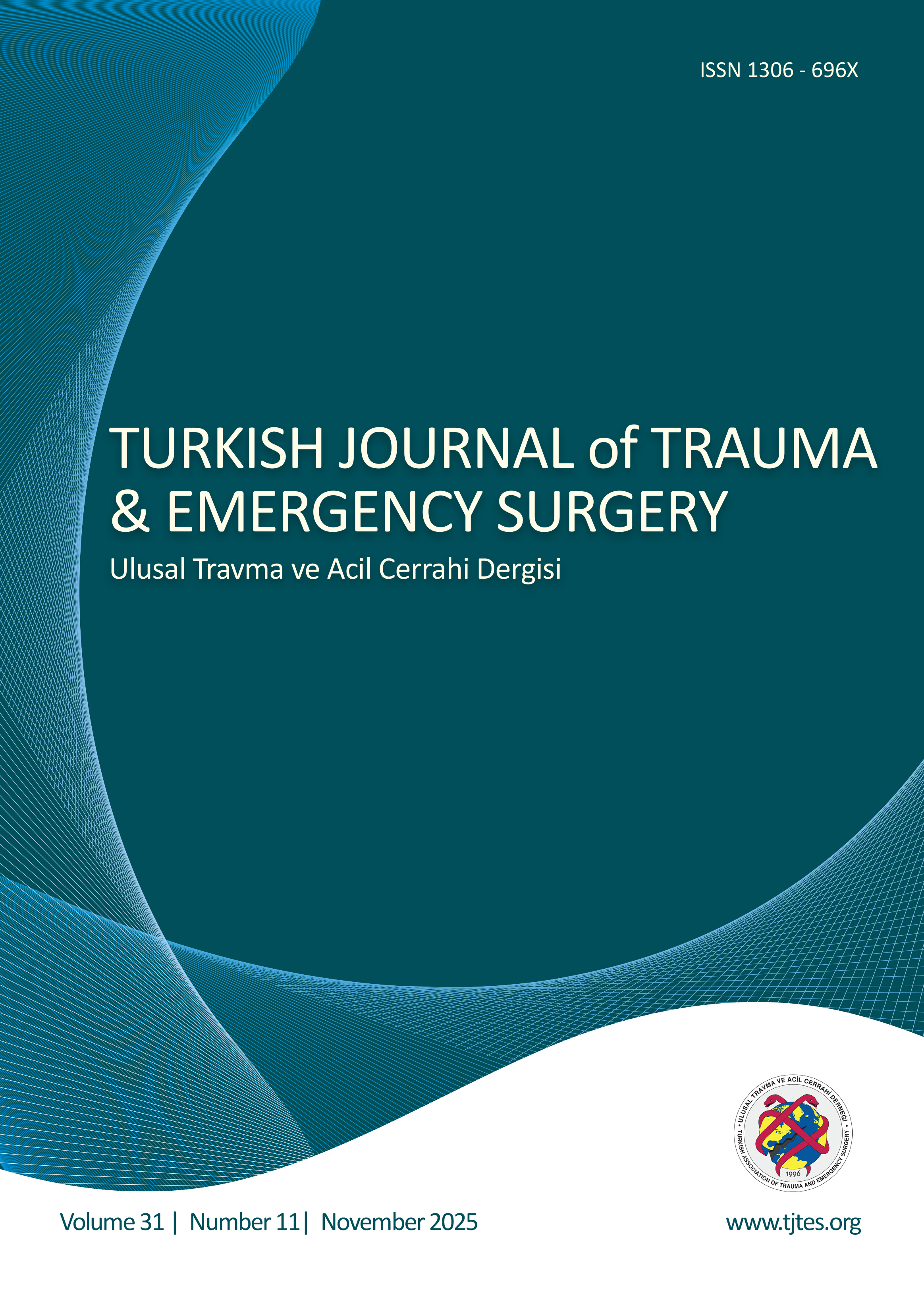Hızlı Arama
Femur intertrokanterik kırıklarının tedavisinde proksimal femur çivisi ve hemiartroplasti sistemlerinin karşılaştırılması
Gokay Gormeli1, Mehmet Fatih Korkmaz1, Cemile Ayse Gormeli2, Cihan Adanas3, Turgay Karatas4, Sezai Aykin Simsek51İnönü Üniversitesi Tıp Fakültesi, Turgut Özal Tıp Merkezi, Ortopedi Ve Travmatoloji Anabilim Dalı, Malatya2İnönü Üniversitesi Tıp Fakültesi, Turgut Özal Tıp Merkezi, Radyoloji Anabilim Dalı; Malatya
3Van Bölge Eğitim Ve Araştırma Hastanesi, Ortopedi Ve Travmatoloji Kliniği, Van
4Malatya Devlet Hastanesi, Genel Cerrahi Kliniği, Malatya
5American Hospital, Ortopedi Ve Travmatoloji Kliniği, İstanbul
AMAÇ: Çalışmamızın amacı intertrokanterik femur kırığı olan yaşlı hastalarda proksimal femur çivisi (PFÇ) ve bipolar hemiartroplasti (BPH) ile tedavinin sonuçlarını karşılaştırmaktı.
GEREÇ VE YÖNTEM: Çalışmaya Ocak 2008Ocak 2012 arasında femur intertrokanterik kırığı nedeni ile tedavi edilen 143 hasta dahil edildi. Hastaların demografik verileri; AO/ASIF (Association for Osteosynthesis/Association for the Study of Internal Fixation) sınıflamasına göre kırık tipi; ASA (American Society of Anesthesiologists) skorları; cerrahi yöntem (PFÇ veya BPH); cerrahinin detayları; komplikasyonlar ve takip sonuçları (Harris Kalça Skoru, Ortalama Hareketlilik Skoru) kaydedildi.
BULGULAR: Cerrahi öncesi veriler PFÇ ve BPH grubunda benzerdi. Bipolar hemiartroplasti grubunda cerrahi süresi daha uzun; cerrahi sırasındaki kan kaybı ve mortalite oranları daha yüksekti (p<0.005). 30.4 (10.9) aylık takip sonucunda Ortalama Hareketlilik Skorundaki azalma ve Harris Kalça Skorunda anlamlı fark yoktu (p>0.05).
TARTIŞMA: Cerrahi tedavi uygulanan femur intertrokanterik kırıklı yaşlı hastalarda PFÇ ve BPH sonuçlarının her ikisi de tatmin edici olsada; daha az cerrahi ile ilişkili travma ve düşük mortalite oranları ile PFÇnin bu hastalarda daha etkili ve uygun tedavi yöntemi olarak tercih edilebileceğini düşünmekteyiz.
Anahtar Kelimeler: Bipolar hemiartroplasti, femur intertokanterik kırığı, Harris kalça skoru; mortalite; proksimal femur çivisi.
Comparison of femur intertrochanteric fracture fixation with hemiarthroplasty and proximal femoral nail systems
Gokay Gormeli1, Mehmet Fatih Korkmaz1, Cemile Ayse Gormeli2, Cihan Adanas3, Turgay Karatas4, Sezai Aykin Simsek51Department Of Orthopedics And Traumatology, Inonu University Faculty Of Medicine, Turgut Özal Medical Center, Malatya2Department Of Radiology, Inonu University Faculty Of Medicine, Turgut Özal Medical Center, Malatya
3Department Of Orthopedics And Traumatology, Van Training And Research Hospital, Van
4Department Of General Surgery, Malatya State Hospital, Malatya
5Department Of Orthopedics And Traumatology, American Hospital, Istanbul
BACKGROUND: The aim of this study was to compare the outcomes of intertrochanteric femur fractures treated with proximal femoral nail (PFN) and bipolar hemiarthroplasty (BPH) in elderly patients.
METHODS: A total of one hundred and forty-three patients with intertrochanteric femur fractures treated surgically between January 2008 and January 2012 were included into the study. Patient demographics, type of fracture according to Association for Osteosynthesis/ Association for the Study of Internal Fixation (AO/ASIF) classification, and the American Society of Anesthesiologists (ASA) classification system scores; type of surgical procedure (BPH or PFN), operative details, complications and follow-up scores (Harris Hip Score [HHS]; Mean Mobility Score [MMS]) were recorded.
RESULTS: The preoperative characteristics of the patients in both PFN and BPH groups were similar. BPH had higher operation times, blood loss in operation and mortality rates (p<0.005). Reoperation times were higher in PFN group (p<0.005). There were no differences with regard to the HHS and the reduction in MMS at the last follow-up with a 30.4 (10.9) months follow-up (p>0.05).
CONCLUSION: Although both PFN and BPH had satisfactory outcomes in surgically treated patients with intertrochanteric femur fractures, we recommend intertrochanteric femur fractures in the elderly tobe treated with PFN; which is an effective and appropriate treatment modality with less surgery related trauma and lower mortality rates.
Keywords: Bipolar hemiarthroplasty, femur intertrochanteric fracture, Harris Hip Score; mortality; proximal femoral nail.
Makale Dili: İngilizce





